|
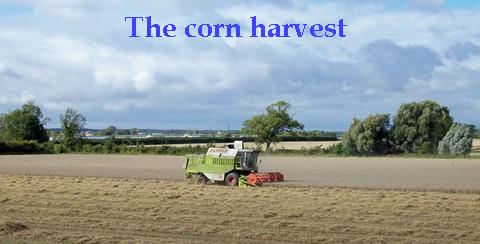
For those who
are old enough, harvest time brings with it memories of a less hurried pace when heavy horses rather than horse power were a familiar sight in the fields with stooks of sheaves waiting for the threshing machine to arrive and although the combine harvester was not common in England until 1945, all is now mechanised in the cause of output and profit and the harvest from fifty acres is brought home in hours rather than the days and sometimes weeks of past times. Modern machines have given rise to a new type of farmer who has to be a technician as well as a man of the soil and although he no longer works from dawn to dusk, during harvest time at least he often works round the clock using the combine's powerful headlights to keep ahead of any change in the weather.
Bourne lies on the edge of the Lincolnshire corn belt and for those who like to drive out and enjoy our rural landscape in late July and August, there are huge swathes that have that look and smell of high summer from years past and one only has to stop and sit for a moment at the cornfield's edge to conjure up scenes from Cider with Rosie, the evocation of this period remembered by the author Laurie Lee, because harvest time may be the peak of modern agricultural production but it is also at the very heart of our English countryside, the fruition of a year's labour and an indication that the land is giving up its generous bounty.
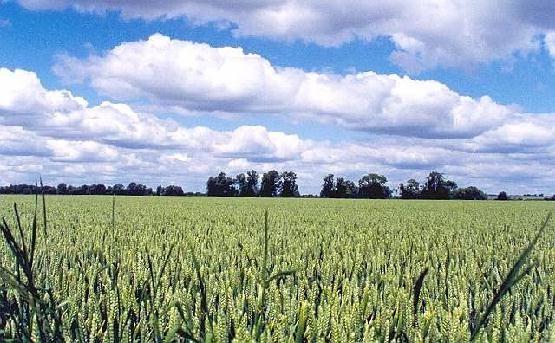 |
|
Green corn near
Wilsford, south of Bourne (above), and near Bourne in 2005 with
crop spraying underway (below). |
|
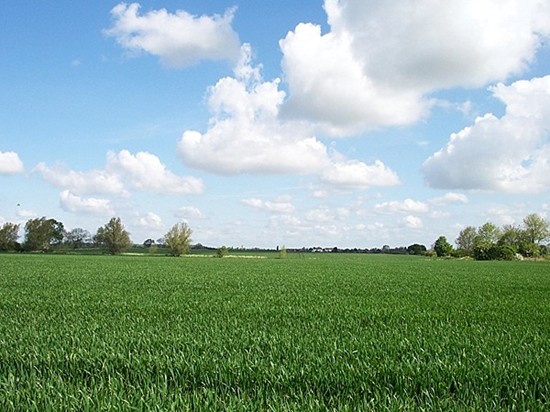 |
|
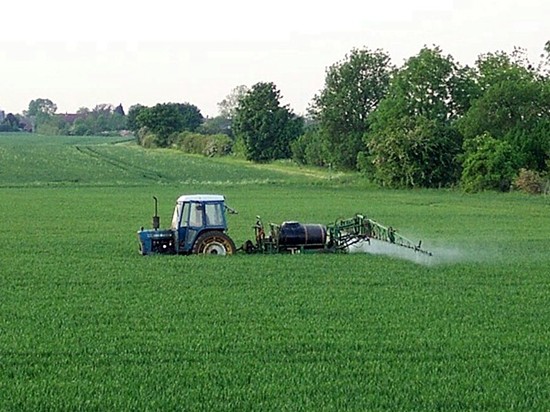 |
|
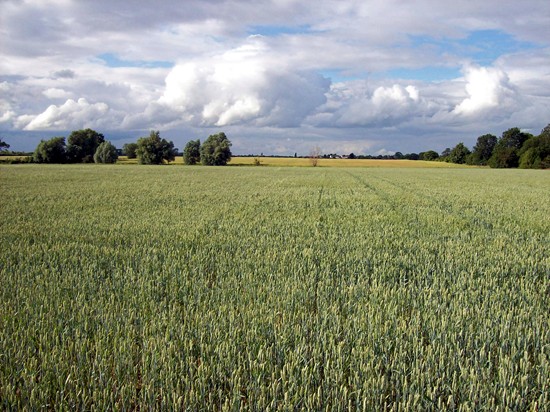 |
Lincolnshire is the country's largest producer of cereals with almost 500,000 acres devoted to wheat which produce 11.5 per cent of the national total. This output is therefore an integral part of our local economy and many jobs, farm businesses and a great deal of investment, depend on it.
In spring we see the shoots of the new plants pushing through the soil and by June the corn is green and knee high, a wonderful sight under a changing fenland sky of sun and cloud. By early August we hear the hum of the combines in the fields and not a minute of fine weather must be wasted and so once they start up at mid-morning, they continue operating until late into the evening and often through the night with powerful headlights showing the way. These machines are mighty and costly pieces of equipment, 450 horse power and a price tag of £165,000, but with a blade sweep of 22 feet, they devour the crop at the rate of five acres an hour, a phenomenal achievement compared to the methods of past times when the pattern of the harvest was dictated by the need to preserve the grain in the ear until threshing time.
The modern, self-propelled combine harvester is farm mechanisation at its most efficient. It incorporates a threshing drum to separate the grain from the chaff and so cuts and threshes in one operation, throwing the chaff out at the rear and making periodic stops to offload its yield into a waiting trailer, hauled into a convenient position by tractor. It uses the latest developments in technology, a computer panel to control the machine's performance and radiophone communications to keep the combine in touch with the tractor driver and even the farmer back at base.
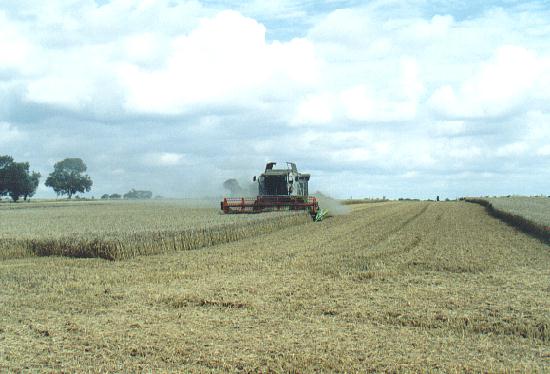
A combine cutting a wheat
crop on the outskirts of Dyke, near Bourne
The operator sitting up at the front in an elevated position like a pilot in a helicopter has a commanding view of the crop about to be cut, safe from the dust and debris thrown up by the powerful engine as the wheat stalks are scooped into the machine like a continuous carpet, a stark contrast to the farm workers of past times hacking at the corn with a sickle, binding it into sheaves, manhandling the sheaves into stooks
and then threshing by hand using a flail, all back breaking work which kept them
occupied for several weeks.
After the cutting comes the baling and collecting
of the straw, once stored in rectangular bales and then stacked for use as
winter bedding for cattle who tread it into a rich manure to be spread on the
land and enrich the soil but the big circular bales are becoming a more familiar
sight because their shape and larger size make them a more efficient storage
medium and a convenient method of transporting around the farm. All of these
tasks are carried out quickly and with high-powered tractors and balers and the
minimum of labour.
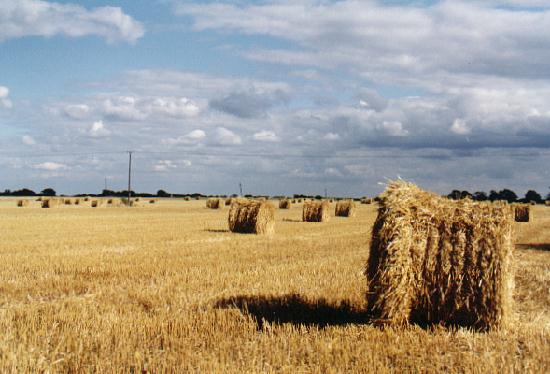
After the harvest -
big bales at Morton, north of Bourne
These modern practices have changed our
countryside customs completely. Harvest was once the climax of the year, an
occasion when half the village was recruited and rewarded with a supper at the
farmer's expense, but it has now become a job for two or three men and their
machines and within hours the land will again be under the plough. One farming
year has ended and another is about to begin.
The sound of the harvest in summer may give us
flights of fancy about past generations who worked the land but the
mechanisation and speed that we now see in the fields is an indication that
agriculture has become an industry based on intensive farming practices and much
of the romance that we once associated with it has gone forever and lives on
only in the minds of those who once saw it as it was.
|
MORE HARVEST PICTURES |
|
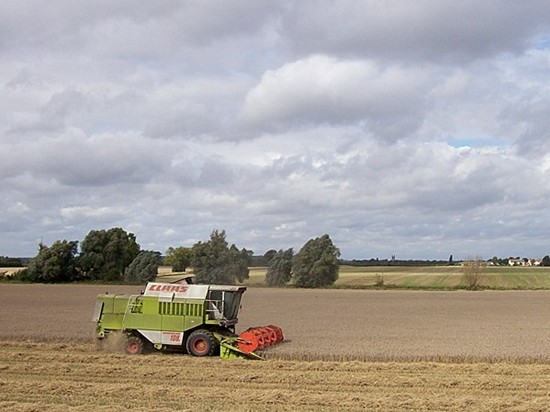 |
|
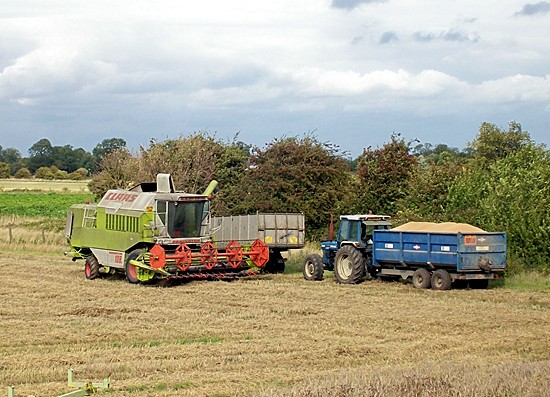 |
|
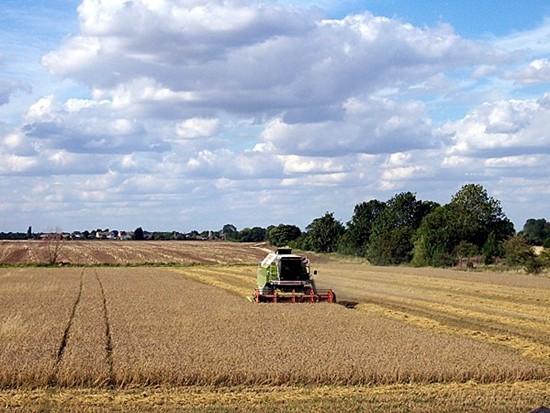 |
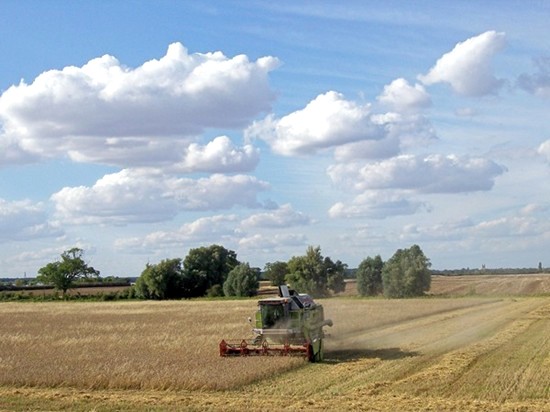 |
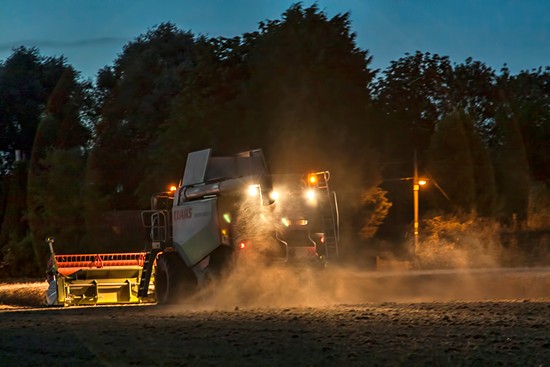 |
|
Modern machinery equipped with powerful lights now enables farmers
carry on harvesting after dark to take advantage of the fine weather, as
seen here at Hanthorpe, near Bourne, in August 2013. |
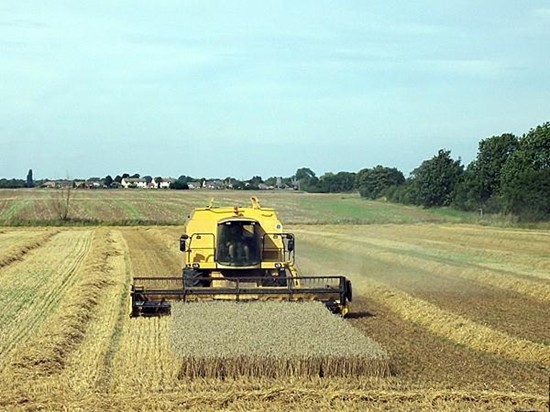 |
|
ALL IS SAFELY GATHERED IN |
|
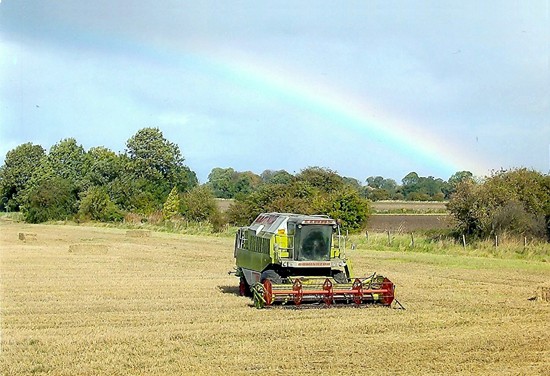 |
|
FROM THE ARCHIVES |
|
THE HARVEST: The past week has been very fine and
those farmers who had not gathered in their corn before the recent heavy
and destructive rains fell, have put forth every effort to secure the
same. In several cases in the fen, large gangs of boys have been engaged
to carry the sheaves of corn home, the ground being too soft to bear a
cart of waggon; and by these and other means, most of the harvest that
remained has been gathered in, but not without a great deal of the corn
being spoiled. - news report from the Grantham Journal, Saturday 2nd
October 1880.
A HARVESTING FEAT IN SOUTH LINCOLNSHIRE: Smart harvesting work is reported from Thurlby, near
Bourne. Nine acres of wheat was reaped with a binder. After the cutting,
the horses were taken out of the binder and a thrashing machine was
brought on to the ground. A start was made next morning with the thrashing
and a sample was obtained in time for Peterborough market where it was
sold for 31 shillings per quarter and put on the rail at Thurlby station
the same night. This is regarded as a record feat of harvesting - grown in
the field one day and marketed on rail the next. - newspaper report
from the Shields Daily Gazette, Tuesday 1st September 1903.
|
See
also
Out with the combines
Hay and straw bales
Bringing in the harvest

Go to:
Main Index Villages
Index
|













